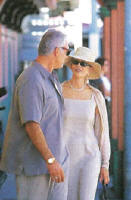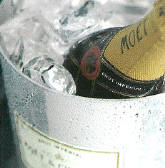 |
|
 |
 |
 |
|
|
Yorktown, Virginia |
844-442-7847 |
|
|
Awaiting Your Return From Shore |
The Historic
Triangle, which stretches across a narrow peninsula between the James and
York rivers, holds the richest concentration of colonial era sites in the
United States. The first successful English colony in the New World was
established here in Jamestown in 1607; 30 aristocrats and 75 indentured
servants arrived at the mouth of the Chesapeake Bay. Within two weeks they
established a fortified settlement on a low-lying island 40 miles up the
James River. During the first years, life in the new settlement was plagued
with hardship as no one had experience in farming or fishing. Tobacco, along
with provisions brought by new settlers, saved Jamestown. As the colony
gradually expanded, it began to encroach upon the Powhatan Indiansí
territory; they retaliated by attacking Jamestown several times. The most
serious damage was caused by the colonists themselves when they burned the
fort to the ground in 1675 to protest the lack of protection from the crown.
They then proceeded to move most of the commercial activity inland to Middle
Plantation, later renamed Williamsburg in honor of King William III. To reflect Virginiaís increasing wealth and importance among Englandís American colonies, a grand capital city was planned according to the latest principles of urban planning. The main street became one of the most spacious in North America; the impressive Capitol building dominated its eastern end. Another commanding landmark was the Governorís Palace. All were geared to make Williamsburg the fitting new capital. When the Revolutionary War broke out, the government decided to move to the more secure Richmond. Yorktown was the site of the decisive, final battle of the Revolutionary War. There was little more than farmland here in 1781 when the besieged British and German troops under the command of Cornwallis surrendered to the joint American and French forces led by George Washington. Most of the fighting took place on open fields and in the waters of Chesapeake Bay; it was a fire in 1814 that destroyed most of Yorktown, leaving few remains of the colonial days. The state of Virginia is proud of its museums in Yorktown and Jamestown. Here events leading to the Revolution are re-created with battle scenes, army encampment and life in the tobacco-wealthy York River towns. |
Awaiting Your Return From Shore |
|
|
|
|
|
|
||
|
|
|
|
|
Complimentary Spirits Await |
Return to Your Suite and Sail Away to The Next Adventure |
Entertainment and Dancing Await You |
|
|
|
|
|
844-442-7847 |







